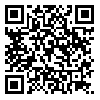Volume 25, Issue 4 (1-2020)
Back to this Issue |
Back to browse issues page
Download citation:
BibTeX | RIS | EndNote | Medlars | ProCite | Reference Manager | RefWorks
Send citation to:



BibTeX | RIS | EndNote | Medlars | ProCite | Reference Manager | RefWorks
Send citation to:
Khajeh Hosseini S, Sayadi A, Mobini Lotfabad M, Heidari S. The effect of Benson’s relaxation technique on sleep quality among shift-working nurses in hospitals. Journal of Hayat 2020; 25 (4) :415-428
URL: http://hayat.tums.ac.ir/article-1-3269-en.html
URL: http://hayat.tums.ac.ir/article-1-3269-en.html
The effect of Benson’s relaxation technique on sleep quality among shift-working nurses in hospitals
1- Dept. of Critical Care Nursing, School of Nursing and Midwifery, Rafsanjan University of Medical Sciences, Rafsanjan, Iran
2- Dept. of Psychiatric Nursing, School of Nursing and Midwifery, Rafsanjan University of Medical Sciences, Rafsanjan, Iran; Social Determinants of Health Research Center, Rafsanjan University of Medical Sciences, Rafsanjan, Iran
3- Dept. of Environmental Health Engineering, School of Health, Rafsanjan University of Medical Sciences, Rafsanjan, Iran; Pistachio Safety Research Center, Rafsanjan University of Medical Sciences, Rafsanjan, Iran
4- Dept. of Fundamental Nursing, School of Nursing and Midwifery, Rafsanjan University of Medical Sciences, Rafsanjan, Iran; Geriatric Care Research Center, Rafsanjan University of Medical Sciences, Rafsanjan, Iran ,kermanshah3252@yahoo.com
2- Dept. of Psychiatric Nursing, School of Nursing and Midwifery, Rafsanjan University of Medical Sciences, Rafsanjan, Iran; Social Determinants of Health Research Center, Rafsanjan University of Medical Sciences, Rafsanjan, Iran
3- Dept. of Environmental Health Engineering, School of Health, Rafsanjan University of Medical Sciences, Rafsanjan, Iran; Pistachio Safety Research Center, Rafsanjan University of Medical Sciences, Rafsanjan, Iran
4- Dept. of Fundamental Nursing, School of Nursing and Midwifery, Rafsanjan University of Medical Sciences, Rafsanjan, Iran; Geriatric Care Research Center, Rafsanjan University of Medical Sciences, Rafsanjan, Iran ,
Abstract: (3494 Views)
Background & Aim: Nursing is a shift-working job at different hours of the day. Therefore, sleep disorders caused by disruption of sleep-wake cycle and circadian rhythm commonly occur in this group. The Benson’s relaxation technique is an easy, non-invasive, and non-pharmacological method that can affect the sleep quality in people. Therefore, this study was conducted to evaluate the effect of Benson's relaxation technique on sleep quality among shift-working nurses in hospitals.
Methods & Materials: In this quasi-experimental study, 80 nurses working in three hospitals in Rafsanjan in 2019, who had poor sleep quality score on the Pittsburgh Sleep Quality Questionnaire were selected by the convenience sampling method, and were assigned into either intervention- or control group, using stratified random sampling method. The intervention group was taught the Benson’s technique and they were asked to perform it before sleeping for one month. After one month, the Pittsburgh Sleep Quality Questionnaire was completed again by the both groups. The data were analyzed by independent t-test, paired t-test, Chi-square and fisher exact test using the SPSS software version 18.
Results: the mean and standard deviation of sleep quality score for the intervention group and control group before the intervention were 7.79±2.53 and 7.95±2.78 respectively and there was no significant difference between the two groups. One month after performing the technique, the mean and standard deviation of the sleep quality score for the intervention group were 5.58±2.32 and for the control group were 8.53±2.93, and the two groups were significantly different from each other (P<0.0001).
Conclusion: In this study, the Benson’s relaxation technique, which is a simple, low-cost, and non-invasive method with no side effects, improved the sleep quality of shift-working nurses. Therefore, nurses’ education and the implementation of this technique is recommended to improve their sleep quality.
Clinical trial registry: IRCT20180306038981N1
Methods & Materials: In this quasi-experimental study, 80 nurses working in three hospitals in Rafsanjan in 2019, who had poor sleep quality score on the Pittsburgh Sleep Quality Questionnaire were selected by the convenience sampling method, and were assigned into either intervention- or control group, using stratified random sampling method. The intervention group was taught the Benson’s technique and they were asked to perform it before sleeping for one month. After one month, the Pittsburgh Sleep Quality Questionnaire was completed again by the both groups. The data were analyzed by independent t-test, paired t-test, Chi-square and fisher exact test using the SPSS software version 18.
Results: the mean and standard deviation of sleep quality score for the intervention group and control group before the intervention were 7.79±2.53 and 7.95±2.78 respectively and there was no significant difference between the two groups. One month after performing the technique, the mean and standard deviation of the sleep quality score for the intervention group were 5.58±2.32 and for the control group were 8.53±2.93, and the two groups were significantly different from each other (P<0.0001).
Conclusion: In this study, the Benson’s relaxation technique, which is a simple, low-cost, and non-invasive method with no side effects, improved the sleep quality of shift-working nurses. Therefore, nurses’ education and the implementation of this technique is recommended to improve their sleep quality.
Clinical trial registry: IRCT20180306038981N1
Send email to the article author
| Rights and permissions | |
 |
This work is licensed under a Creative Commons Attribution-NonCommercial 4.0 International License. |






